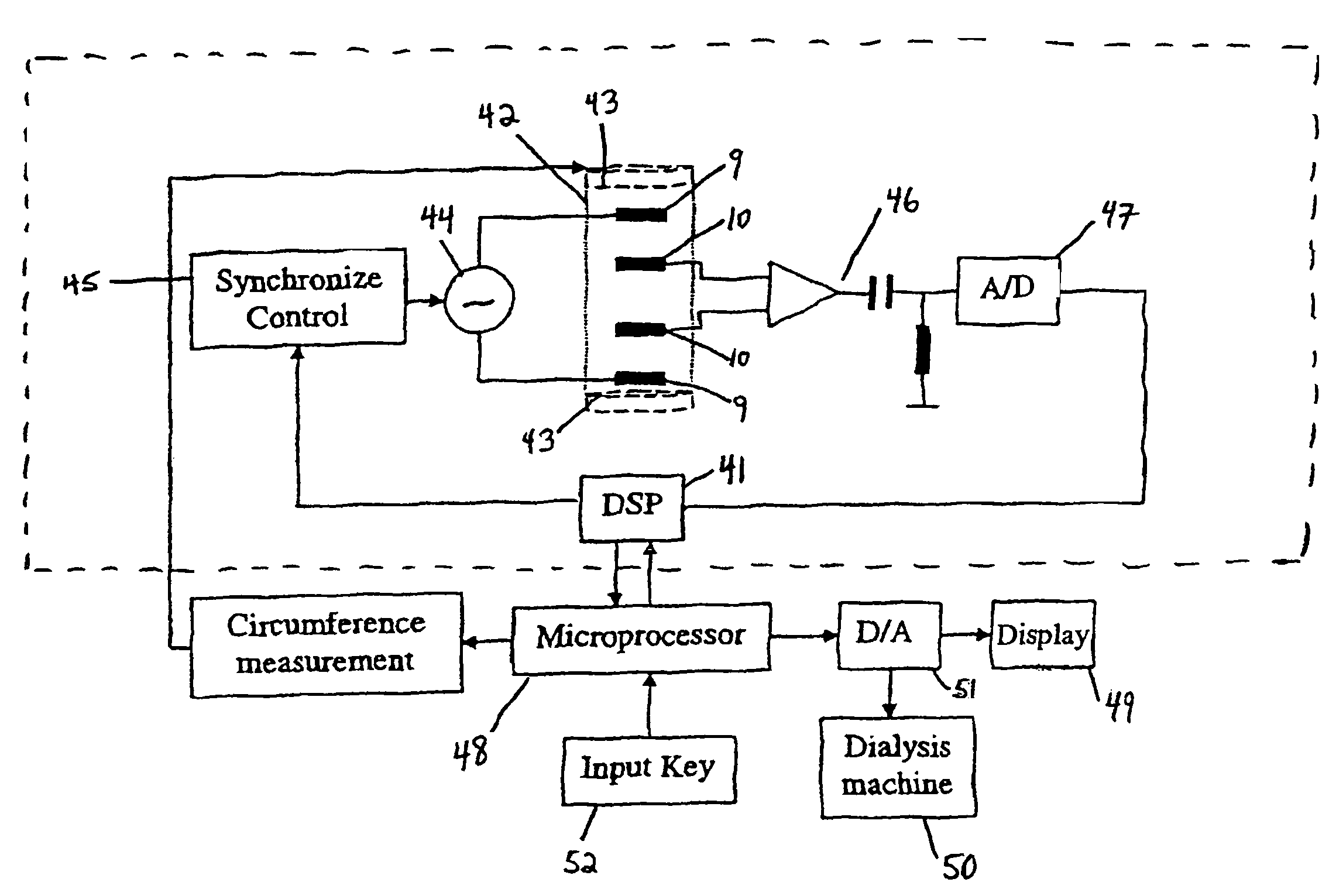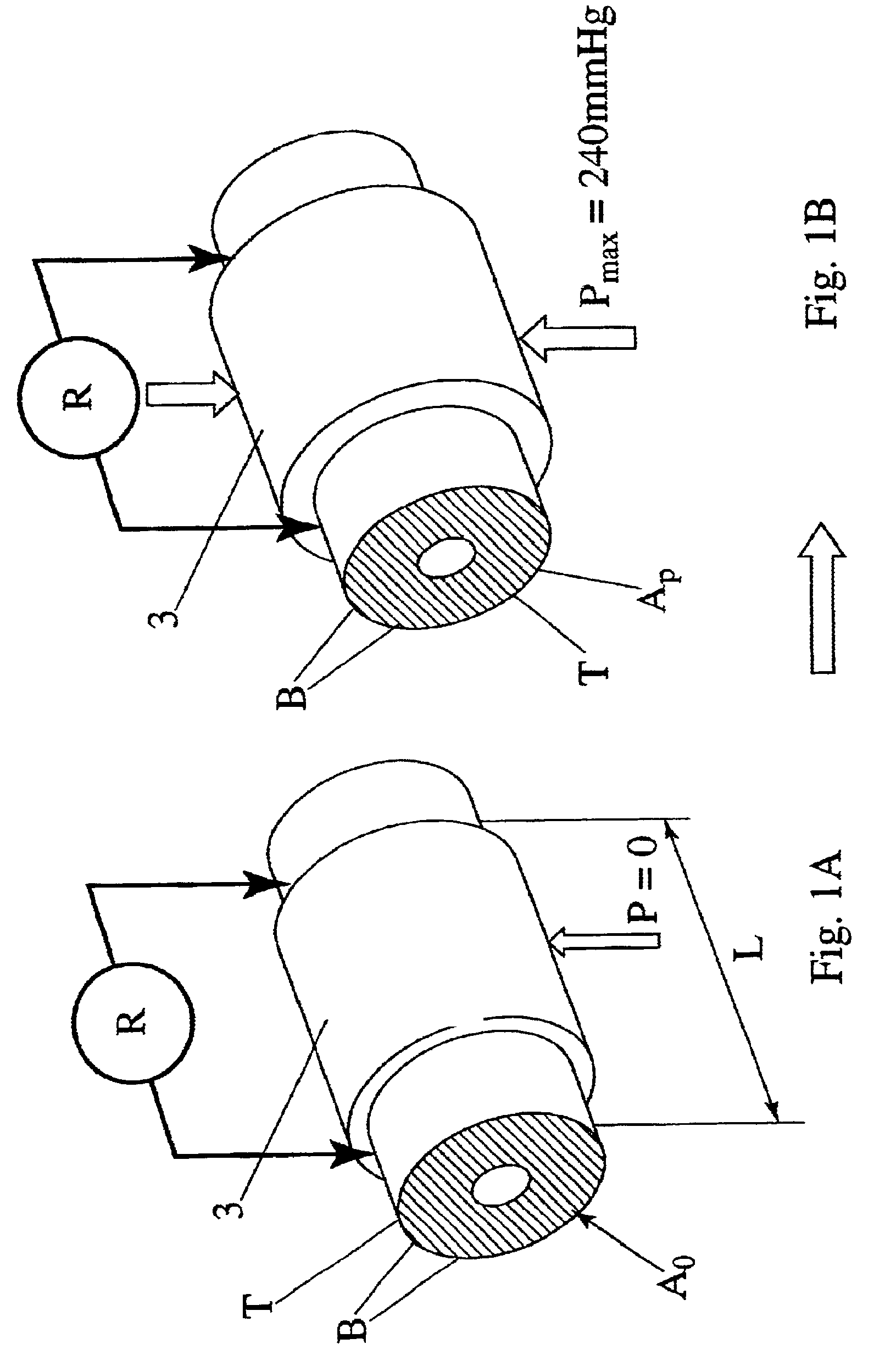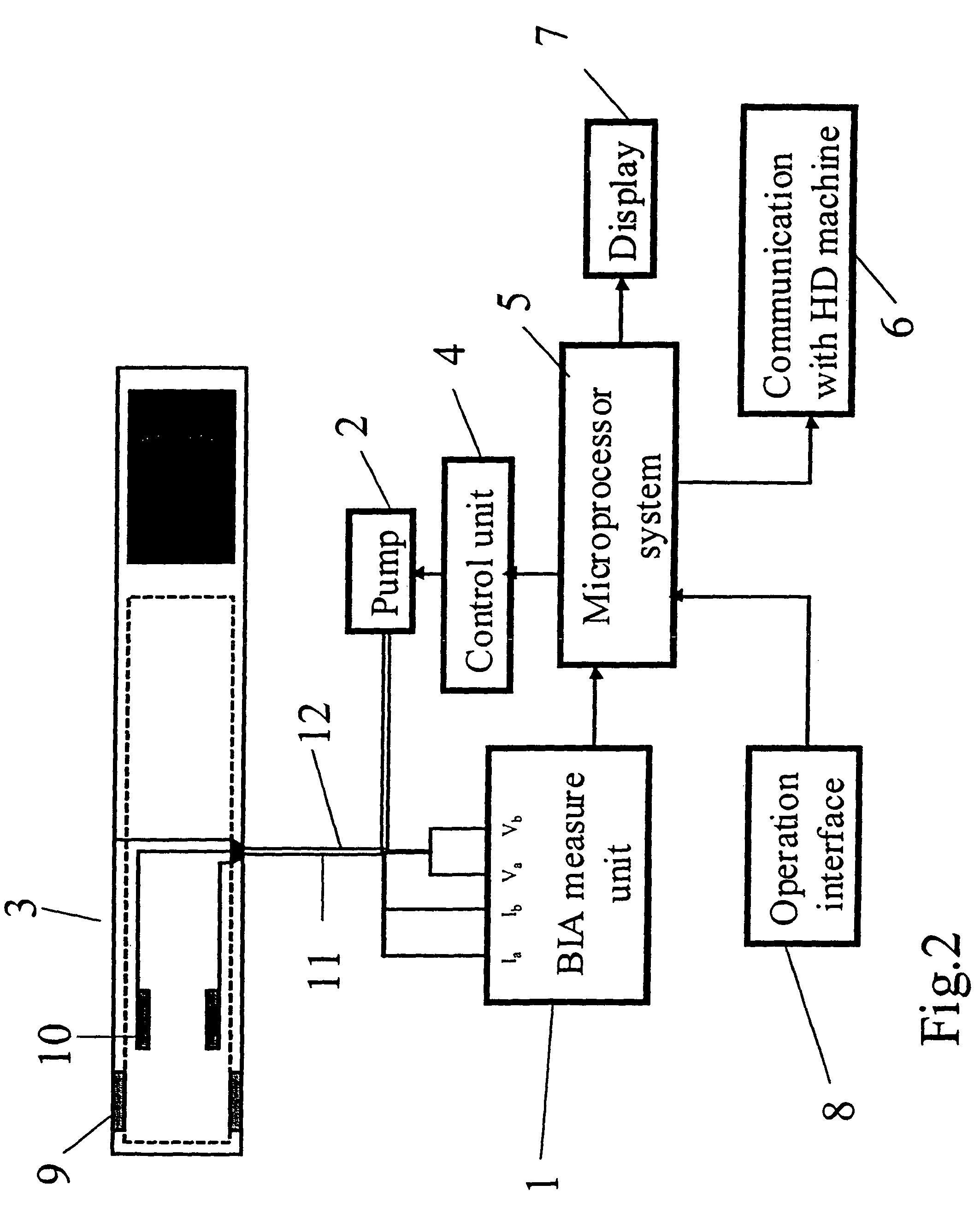Device and method for the determination of dry weight by continuous measurement of resistance and calculation of circumference in a body segment using segmental bioimpedance analysis
a technology of resistance and body segment, applied in the field of dry weight determination by continuous measurement of resistance and calculation of circumference in a body segment using segmental bioimpedance analysis, can solve the problems of complex correct interpretation of dialysis signs and symptoms, dry body weight (dw or dry weight), and the management of the dialysis patien
- Summary
- Abstract
- Description
- Claims
- Application Information
AI Technical Summary
Benefits of technology
Problems solved by technology
Method used
Image
Examples
example 1
[0108]Twenty healthy subjects (Table 1) and thirteen hemodialysis patients (Table 2) were studied, the latter during hemodialysis. Shown in Tables 1 and 2 are their mean ages, weights and body mass indices (BMI). Data are presented as mean value±SD
[0109]
TABLE 1Healthy subjectsAgeWeightBMIn(years)(kg)(kg / m2)Male1040.8 ± 583.1 ± 21.627.1 ± 5.0Female10 35 ± 964.3 ± 9.7 24.2 ± 3.2
[0110]
TABLE 2Hemodialysis patientsAgeDry WeightBMIn(year)(kg)(kg / m2)Male1048.5 ± 12.876.8 ± 16.426.8 ± 4.3Female365 ± 1460.5 ± 16 23.7 ± 3.5
example 2
[0111]Segmental bioimpedance was measured continuously every 10 minutes during hemodialysis using 6 electrodes all on the left side of the body. Two electrodes, one on the hand and one on the foot, were used to inject current. Measurement electrodes were placed on the wrist, shoulder, hip and ankle. Resistivity was measured in the wrist-shoulder segment (Varm), the shoulder-hip segment (Vtrunk), and in the ankle-hip segment (Vleg). Also measured were systolic blood pressure (SBP), relative blood volume or hematocrit (RBV), and the ultrafiltration rate (UFR). In this way, blood volume and segmental extracellular volume (ECV) in the leg, arm and trunk were calculated. The results are shown in FIG. 12. The X-axis is time in minutes, the Y-axis the relative change in value with the value of a particular parameter at the start of hemodialysis being equal to 100%. After continuing ultrafiltration changes in ECV of the leg became small that the slope was nearly horizontal i.e. approached 0...
example 3
[0112]In this example, we studied 21 hemodialysis patients, dividing them into two groups by clinical estimation of whether they were at clinical dry weight (CDW; number of patients=10, mean age=56.6 years) or were over hydrated (OH; number of patients=11, mean age=66.5 years) (see Table 3 below). For each hemodialysis patient, we measured the resistivity and the rate of change in resistance (Δ slope, or Δδ) during a dialysis session, for a particular body segment. The ratio of regional extracellular volume (ECV) was measured by segmental bioimpedance and compared to regional geometric volume (RGV) for estimation of regional hydration (wherein RGV=cross sectional area (A)·length (L, 10 cm)). Our results, as shown in Table 3 below, indicate that the overhydrated patients (OH) had significantly lower resistivity than the clinical dry weight patients (CDW); however, the rate of change in resistance (Δ slope) during dialysis was not significantly different between the overhydrated patie...
PUM
 Login to View More
Login to View More Abstract
Description
Claims
Application Information
 Login to View More
Login to View More - R&D
- Intellectual Property
- Life Sciences
- Materials
- Tech Scout
- Unparalleled Data Quality
- Higher Quality Content
- 60% Fewer Hallucinations
Browse by: Latest US Patents, China's latest patents, Technical Efficacy Thesaurus, Application Domain, Technology Topic, Popular Technical Reports.
© 2025 PatSnap. All rights reserved.Legal|Privacy policy|Modern Slavery Act Transparency Statement|Sitemap|About US| Contact US: help@patsnap.com



